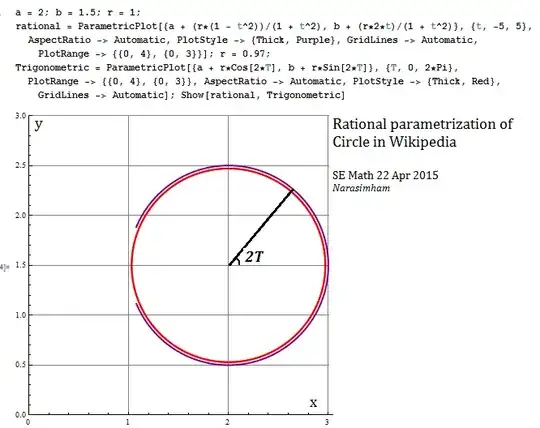In http://en.wikipedia.org/wiki/Circle but also in the corresponding article in the German Wikipedia I find this formulation ( sorry, I exchange x and y as I am accustomed to it in this way ) :
"An alternative parametrisation of the circle is: $$x=a+r\frac{1-t^2}{1+t^2}$$ and $$y=b+r\frac{2t}{1+t^2}$$ with real-valued parameter $t$."
But if I plot this curve I only get a half-circle with these formulas when $(a,b)\neq(0,0)$ which is obviously not what is searched for and expected.
I recently found without any elementary trigonometry e.g. for the unit circle with $(a,b)=(1,0)$ a closed rational parametrization which plots the "whole" circle perfectly if $\lim_{t\to\infty}$.
Now my 2 questions:
- What is your formula for the case of the unit circle with $(a,b)=(1,0)$ and how is your way to derive it ?
- Is there a way to calculate a rational parametrization for the unit circle with general $(a,b)$ which allows "whole"-circle plotting ? Maybe $a$ and $b$ must be rational numbers or even integers ?

